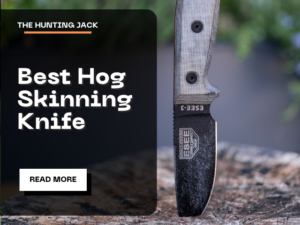For deer hunters, this is a question to end all questions. From before humans had guns and there was a recognized hunting season, we’ve been trying to fathom which environmental factors influence deer activity and why. Man will forever want to get into the head of the whitetail and know, not guess, deer behavior from the inside.
Unfortunately, this will never happen.
Instead, we follow deer activity in the best way we know: through trial and error and a constant craving for greater knowledge. One of these cravings has led us to examine the moon and whether or not moon phases influence deer activity. And if they do, how?
Let’s analyze what’s gone before and whether it provides clues on how moon phases affect deer activity and movement.
Table of Contents
ToggleWhat are Moon Phases?
To see how moon phases might help in our quest to become better deer hunters, we should revisit the facts.
We know the moon does an Earth orbit and spins on its axis at the same speed. We also know we can only ever see a single side of our lunar marker. It’s only because of the sun’s rays that we can see the moon in the sky at all. As this sunshine illuminates the moon, it does so in four phases every month. This depends entirely on the position of the orbit that it finds itself.
From our observations over many moons (excuse that one), we know that the four lunar phases last for just over seven days each. These lunar phases are as follows:-
New moon
In this position, there’s no moonlight as the moon is sitting in the sun’s shadow. Only the Earth’s reflected light provides a dim glimpse, so the new moon means no moon.
1st quarter
The right side of the moon is illuminated by the sun depending on its position in relation to the Earth. This illumination provides a skinny visible slice of our heavenly body.
Full moon
A full moon provides a splendid week or so for lunar lovers. As the moon is on the far side of the Earth from the sun, we see it in its full glory with 100% illumination. This is the time when those with mystical undertones believe all kinds of magical things happen.
3rd quarter
The final lunar orientation is the exact opposite of the first quarter, with the sun illuminating only the moon’s left side.
Further sub-phases
The moon’s quarters evolve as the sun moves. The phases can be divided based on the illuminated portion at any given time. As it moves from the new to the 1st quarter phases, the moon experiences its growing or waxing crescent. This occurs when the illuminated portion is somewhere lower than 50%.
There is 50% to 100% visibility when the 1st quarter moon moves toward full. This sub-phase is known as a waxing gibbous. From the full moon to the 3rd quarter, visibility decreases from 100% to 50%. This moon sub-phase is a shrinking or waning gibbous. Finally, it’s called a waxing crescent from the 3rd quarter to the new.
What are the Effects of Moon Phases?
Many don’t believe in the moon’s effect on our lives, dismissing it as mumbo-jumbo. But remember how the moon affects the tides through its gravitational pull. From such a distance, its power causes the daily high and low tides as it moves around our Earth. Of course, that’s not the only way it influences the tides.
The moon aligns with the Earth and the sun when new or full. The force of gravity created by the sun and moon causes unusually high tides, known as spring tides. When the moon is in its first and third quarter phases, the moon and sun cause less wave variation than at any other period, resulting in neap tides.
As animals, we comprise up to 75% water. With that in mind, is it too much of a stretch to believe we can’t be affected by the moon’s phases, just like tides are? I’ve mentioned how many believe that a full moon has a magical effect on humans. As many reported events correspond with lunar cycle changes, there’s maybe something to this belief.
Vehicle accidents, suicides, and even human births and conceptions have lined up with lunar movements over the years. So too has the monitoring of patient behavior in asylums and facilities for the psychologically disturbed. As water forms up to 75% of most animals, could the moon impact animal behavior?
We can call on some evidence to support the influence of lunar cycles on animals. Think of how sea turtles time laying their eggs on the full moon, while particular bird and fish migrations and reproduction cycles link with lunar movement.
The tides influence practically all animal forms in the sea. Since there’s a known correlation between the moon and the tides, perhaps you can also say there’s a connection there. Scientists have concluded that certain insects, rats, and mice exhibit different behavior patterns connected to the lunar cycles.
So Do Moon Phases Influence Deer Movement?
Some theories suggesting how moon phases affect deer movement have done the rounds. One indicates that deer move more whenever the position of the moon is straight underneath or overhead, known as minor and major peaks that happen once daily. Certain deer hunters swear their livelihoods on this, but is there scientific proof? I haven’t seen any.
Some believe that deer will stay put in the daylight over the full moon and move more in the dark. This could carry a little credence, as many people hunting deer report less dusk and dawn deer activity when it’s the full moon. It’s hard to prove whether there’s increased deer movement at night, though.
Studies are inconclusive regarding the moon phase effect on deer movement, with no cement patterns close to this in evidence.
In his university graduate work, a student called Marcus Lashley compared over 20,000 GPS collars to the moon’s phases. He noticed deer movements varied with no noticeable changes when considering the moon’s position or moon phases.
Furthermore, the peak buck movements happened at dusk, except while it was a new moon when dawn experienced higher deer activity. So Lashley’s research supports the firm belief that most deer movement happens at either dusk or dawn regardless of moon phases. After Lashley’s findings, there is still no conclusive evidence that moon phases influence buck movements in any stand-out way.
Do Moon Phases Affect the Rut?
Firstly, let’s explain the rut before we go any further.
What is the rut?
To every deer hunter, the leadup to peak rut time is when every mature buck loses its head in pursuit of does in heat. Bucks that are generally unobtrusive are suddenly visible everywhere. There’s plenty of daytime deer activity, making deer hunting precisely what you want to be doing.
Peak rut time, however, is often referred to as the lockdown phase. Peak rut is the most intense breeding period for peak breeding when most older bucks and their does are already mating. During this peak rut period, there may be a little abnormal activity, but generally, it’s quite a slow time for deer hunting.
So what about moon phases affecting the rut?
There is a theory making the rounds that moon phases influence when the rut happens and thus will affect when the early rut activity occurs. A fact is that photoperiodism, or changes in sunlight, affects deers’ physiological processes prompting their reproduction.
If changes in sunlight can affect peak activity, why not when and how the moon rises? As the full moon happens at different times every year, it could account for why the peak rut dates vary annually. It theoretically makes sense, but it remains a theory until somebody comes out and scientifically proves it.
It transpires that peak rut dates vary in different states. As you move toward the Southern states, the trend is for peak breeding season to occur later. While these peak dates vary by as much as a month between certain states, one thing remained constant. The peak of the rut didn’t change in any state from year to year, independent of the moon phase.
Once again, we’ve no evidence to prove when and how the moon rises or doesn’t affect the movement or activity of whitetail deer.
Nature and Science. Do They Agree?
Scientific types won’t say anything conclusive when referencing the movement of deer and the moon phase. It’s not surprising as there isn’t anything definitive enough to prompt a wildlife biologist to commit to anything but an opinion. If or when something on the subject appears in a scientific journal, I’m sure this will all change.
You cannot accuse those on the side of nature of not trying. Several people have made numerous efforts to find a connection between the moon phase and deer movement patterns. Although there have been some attempts to do so, there has been no forward movement to confirm a moon phase/deer movement correlation.
FAQs
What moon phase causes the most deer movement?
Deer movement appears to be greatest at dawn during new moons, with a bit of increased activity just after daylight. Additionally, there is more deer movement in the late afternoon during the last-quarter moon. The statistics show minor activity changes. However, these aren’t sufficient to prove conclusive differences from other moon phases.
Are deer more noticeable during a full moon?
Deer hunters say they have noticed that deer venture out during evening hours when there’s a full moon. Potentially, these sightings are only because hunters can see the deer better by the full moon’s light.
What is a blood moon in hunting terms?
The full moon closest to the autumn equinox, the first day of fall, is known as the harvest moon. The next full moon is known as the hunter’s moon or blood moon, perhaps about the blood spilled during a hunt. This is more a way to mark a time of the season than any indication that hunting is any better at that specific time.
What is the best time to hunt deer when the moon is full?
There are stories that dinner and midnight feeding times during this time cuts down the need for deer to feed early in the morning as usual. This means that, although the moon might affect dawn feeding times, there is no concrete proof that this is the case. Rumors are that later morning feeding increases over these periods.
Should We Watch the Moon Phase for the Best Time to Hunt?
Many factors can influence deer movements. These include how long a day is, the wind strength and temperature, whether it rains, barometric pressure, and hunting pressure. It would be straightforward to assign space to write about any of those.
If the moon phases were such a noticeable phenomenon in predicting the best time to hunt, I wouldn’t have to spend as much time writing about it. Does that mean it’s not a factor to consider? No, it makes sense to consider everything you hear unless it’s disproved. It doesn’t mean you have to believe it, though.
Simply put, if you’re looking for the best time to hunt, look at the date when the hunting season opens and the date that it closes, and choose a date in between. Consider these tips to become a better deer hunter, keep in mind what not to do when deer hunting, and remember, there is never a wrong time to hunt between those dates.



